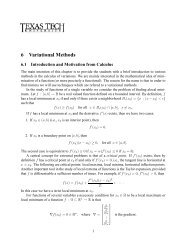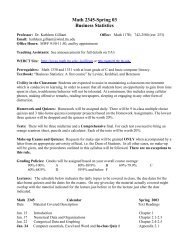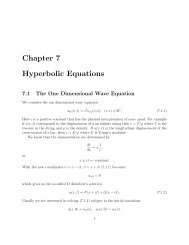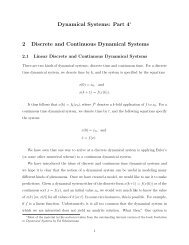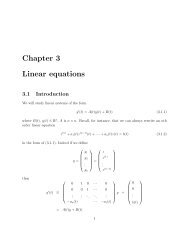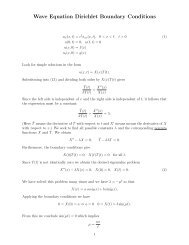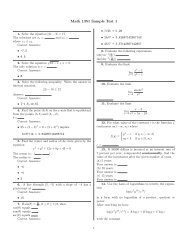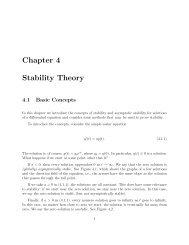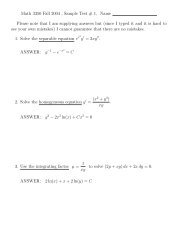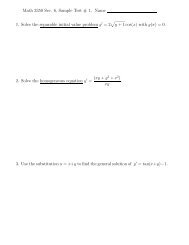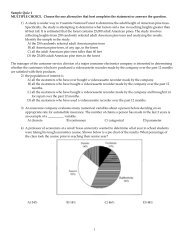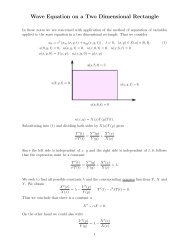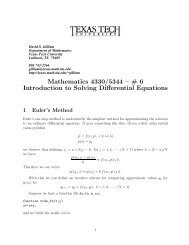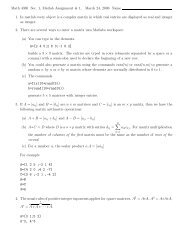Chapter 6 Partial Differential Equations
Chapter 6 Partial Differential Equations
Chapter 6 Partial Differential Equations
You also want an ePaper? Increase the reach of your titles
YUMPU automatically turns print PDFs into web optimized ePapers that Google loves.
6.2. LINEAR AND QUASILINEAR EQUATIONS OF FIRST ORDER 19<br />
Such a curve is called a characteristic curve. To construct a solution surface we first find<br />
x = x(s, t), y = y(s, t), u = u(s, t)<br />
and then solve the two equations x = x(s, t) and y = y(s, t) for s and t in terms of x and y.<br />
In order to guarantee that this can be done requires a result from advanced calculus – the<br />
inverse function theorem which states:<br />
If x = x(s, t) and y = y(s, t) are C 1 maps in a neighborhood of a point (s 0 ,t 0 ),<br />
the Jacobian<br />
⎛ ⎞<br />
∂x ∂x<br />
⎜ ⎟∣<br />
|J| = det ⎜ ∂t<br />
⎝∂y<br />
∂t<br />
∂s⎟<br />
∂y⎠<br />
∣<br />
∂s<br />
∣<br />
(s0 ,t 0 )<br />
≠0.<br />
and, in addition, x 0 = x(s 0 ,t 0 ) and y 0 = y(s 0 ,t 0 ), then there exists a neighborhood<br />
R of (s 0 ,t 0 ) and there exists unique C 1 mappings<br />
and<br />
s = s(x, y), t = t(x, y)<br />
s = s(x 0 (s),y 0 (s)),<br />
0=t(x 0 (s),y 0 (s))<br />
With this we can construct our solution surface as<br />
and<br />
u = u(s, t) =u(s(x, y),t(x, y)) = u(x, y),<br />
u 0 (s) =u(s, 0) = u(s(x 0 (s),y 0 (s)),t(x 0 (s),y 0 (s))) = u(x 0 ,y 0 ).<br />
Example 6.2.11. Solve<br />
We first seek solutions of<br />
xu x +(x + y)u y = u +1, u(x, 0) = x 2 .<br />
dx<br />
dt = x,<br />
In this case we can parameterize C 0 by<br />
dy<br />
dt = x + y,<br />
du<br />
dt = u +1.<br />
x 0 (s) =s, y 0 (s) =0, u 0 (s) =s 2



